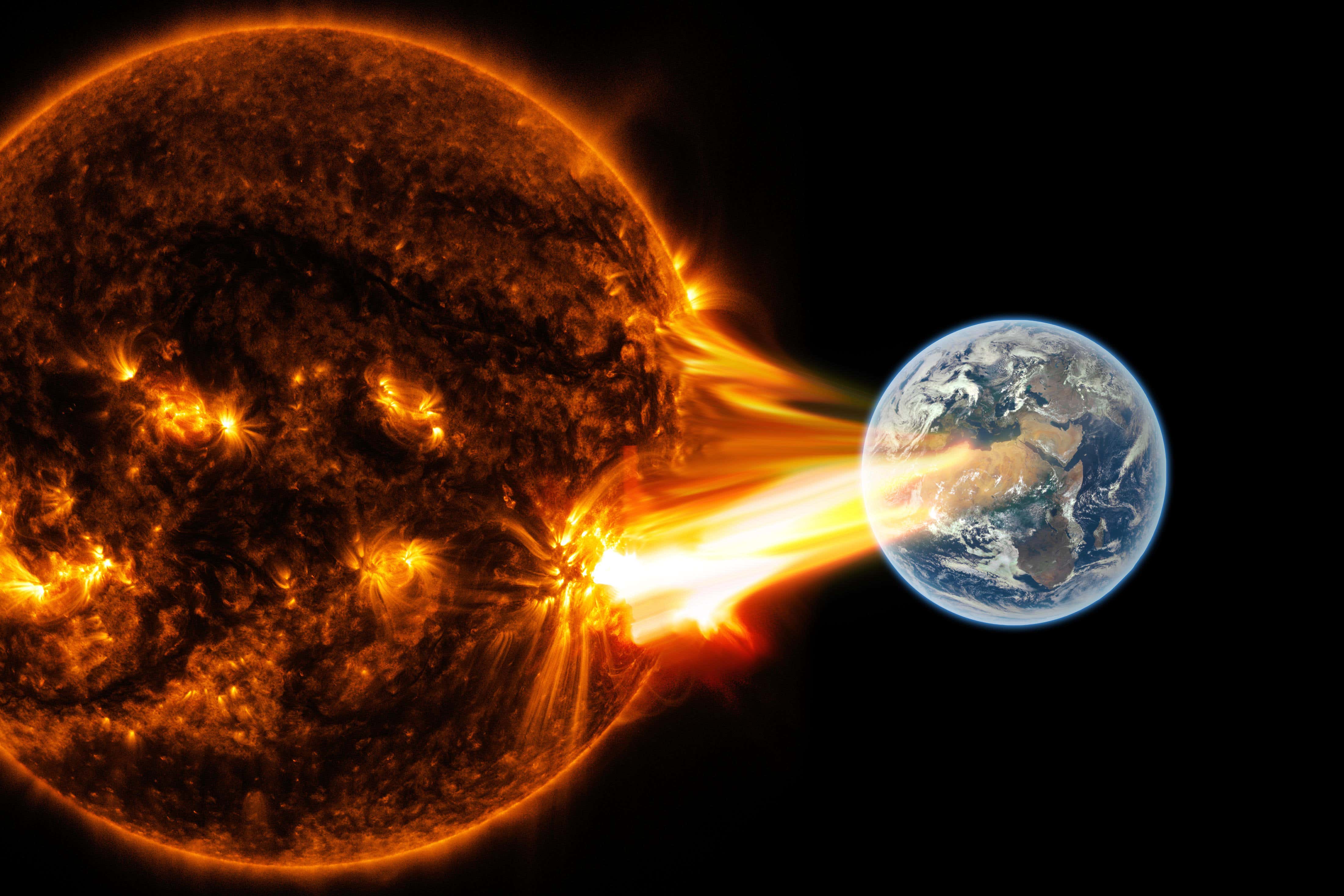Biggest ever solar storm identified using ancient tree rings
The event took place more than 14,000 years ago, scientists said.

Researchers have identified the biggest ever solar storm – when the sun emits huge bursts of energy – using ancient tree rings.
The event happened 14,300 years ago, according to the analysis of ancient tree rings found in the French Alps.
This radiocarbon spike was caused by a massive solar storm, the experts said, adding that a similar storm today could potentially wipe out satellite systems and cause massive electricity grid blackouts, costing billions of pounds.
The academics argue it is important to understand solar storms to protect future communications and energy systems and help build resilience against their effects.
For the study, an international team of researchers, including from the University of Leeds, measured radiocarbon levels in ancient trees on the eroded banks of the Drouzet River, near Gap, in the Southern French Alps.
The tree trunks, which are subfossils – when the fossilisation process is not complete – were sliced into tiny single tree rings.
By looking closely at the individual rings, researchers found an unprecedented spike in radiocarbon levels occurring precisely 14,300 years ago.
They said the spike was most likely caused by a massive solar storm that would have ejected huge volumes of energetic particles into the Earth’s atmosphere.
Edouard Bard, professor of climate and ocean evolution at the College de France and lead author of the study, said: “Radiocarbon is constantly being produced in the upper atmosphere through a chain of reactions initiated by cosmic rays.
“Recently, scientists have found that extreme solar events including solar flares and coronal mass ejections can also create short-term bursts of energetic particles which are preserved as huge spikes in radiocarbon production occurring over the course of just a single year.”
Tim Heaton, professor of applied statistics in the school of mathematics at the University of Leeds, said: “Extreme solar storms could have huge impacts on Earth.
“Such super storms could permanently damage the transformers in our electricity grids, resulting in huge and widespread blackouts lasting months.
“They could also result in permanent damage to the satellites that we all rely on for navigation and telecommunication, leaving them unusable. They would also create severe radiation risks to astronauts.”
Nine such extreme solar storms – known as Miyake Events – have now been identified as having occurred over the last 15,000 years.
The most recent confirmed Miyake Events occurred in 993 AD and 774 AD.
This newly-identified 14,300-year-old storm is the biggest yet – roughly twice the size of the most recent two.
Experts have never seen a Miyake Event in action and say there is still have much to learn about the behaviour of the sun and whether such events can be predicted.
Prof Bard said: “Direct instrumental measurements of solar activity only began in the 17th century with the counting of sunspots.
“Nowadays, we also obtain detailed records using ground-based observatories, space probes, and satellites.
“However, all these short-term instrumental records are insufficient for a complete understanding of the sun.
“Radiocarbon measured in tree rings, used alongside beryllium (metal) in polar ice cores, provide the best way to understand the sun’s behaviour further back into the past.”
Bookmark popover
Removed from bookmarks